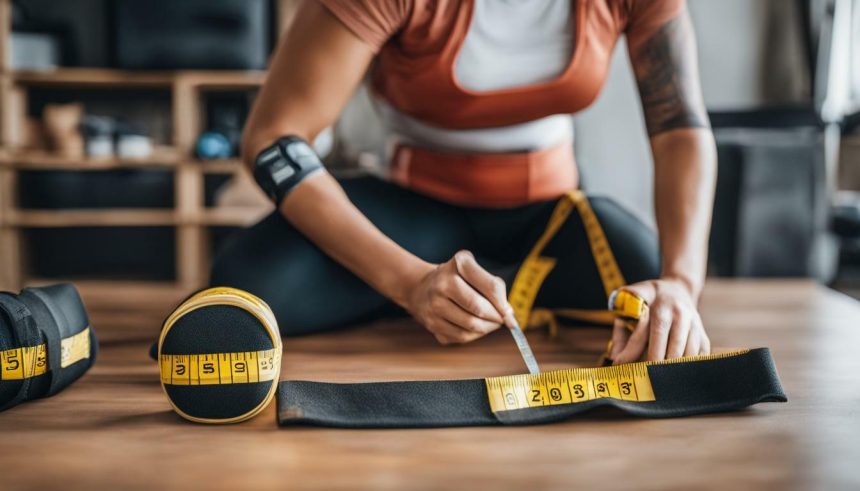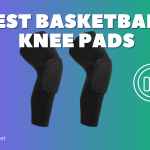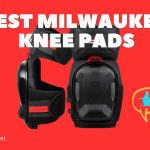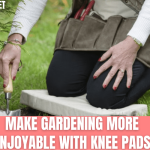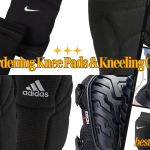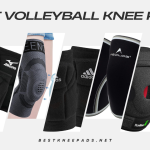If you are someone who participates in athletic activities, especially those that require kneeling or crawling, knee pads are an essential protective gear for you. Knee pads not only provide cushioning to your knees but also protect them from getting injured during the strenuous activities. However, wearing knee pads that do not fit well can cause discomfort and render them ineffective in preventing injuries.
To ensure that you get the full benefits of knee pads, it is crucial to find the right size that fits you perfectly. In this section, we will provide a step-by-step guide on how to determine your knee pad size accurately.
Key Takeaways
- Wearing ill-fitted knee pads can cause discomfort and render them ineffective in preventing injuries.
- It is crucial to find the right size knee pad to ensure maximum comfort and protection.
- Follow our step-by-step guide to determine your knee pad size accurately.
Why Finding the Right Size is Important
When it comes to knee pads, finding the right fit is crucial. A poorly fitted knee pad can not only be uncomfortable, but it can also fail to provide optimal protection.
Having proper knee protection is essential if you’re engaging in any activity that involves kneeling or impact to the knee area, from sports like volleyball and basketball to manual labor jobs like construction.
Ill-fitting knee pads can cause discomfort, bruising, and even slip during activity, which can lead to injury. It’s important to take the time to find knee pads that fit securely but comfortably, allowing you to move freely while still protecting your knees.
Remember, wearing the right knee pads can make all the difference in your comfort and safety while engaging in various activities.
Measuring Your Knee for the Right Fit
Before purchasing knee pads, it’s crucial to determine your correct size for optimal protection and comfort. Measuring your knee circumference is simple and only requires a measuring tape.
Step 1: Preparation
Begin by sitting down and bending your leg at a 90-degree angle. Place the measuring tape around your kneecap, ensuring that it is snug but not too tight.
Pro Tip: It’s recommended to measure your knees while wearing pants or shorts that you would wear while engaging in your desired activity to ensure an accurate fit.
Step 2: Measuring Your Knee
Next, measure the circumference of your knee by reading the measurement where the end of the tape meets the rest of the tape. Round up the measurement to the nearest half-inch for accurate sizing.
Pro Tip: When measuring, ensure that the tape is not twisted, and the top and bottom of the tape are level for accuracy.
Step 3: Checking the Size Chart
After measuring your knee, reference the knee pad size chart provided by the manufacturer to determine which size is appropriate for you. Most size charts list corresponding sizes based on knee circumference measurements.
Pro Tip: If you fall between two sizes, it’s best to size up for a more comfortable fit.
By following these simple steps for measuring your knee circumference, you can confidently choose the appropriate size for your knee pads, ensuring optimal protection and comfort during any activity.
Choosing the Right Type of Knee Pad
When it comes to knee pads, there are several types to choose from, each with varying levels of protection. Knee pads can range from simple foam padding to high-tech, impact-resistant designs.
The type of knee pad you choose will depend on the activity you plan to engage in and the level of protection required. For instance, if your activity involves high-impact movements such as jumping or landing, you’ll likely need a knee pad with more substantial padding and impact resistance.
For activities such as gardening or DIY, a simple foam knee pad may be sufficient to protect your knees from abrasions and minor impacts.
It’s important to choose the right type of knee pad to ensure adequate protection and prevent discomfort or injury during activities.
Other considerations when choosing the type of knee pad include the level of mobility required, breathability, and comfort. For instance, if you plan to engage in high-intensity activities that require a lot of movement, you’ll want to choose a knee pad that offers adequate protection without hindering your mobility.
Overall, there are several knee pad types, including foam knee pads, gel knee pads, hard-shell knee pads, and knee sleeves. Each type has its benefits and drawbacks, and the key is to choose the one that best suits your needs.
Types of Knee Pads
Foam Knee Pads: These knee pads are made of thick foam padding and are ideal for light activities that require minimal protection. They are lightweight, affordable, and provide excellent cushioning to your knees. Foam knee pads are suitable for gardening, cleaning, and other household tasks.
Gel Knee Pads: These knee pads have a gel core that conforms to the shape of your knee and provides superior comfort. Gel knee pads are excellent for activities that require a lot of kneeling, such as flooring or tile installation. They are highly recommended for professional contractors who spend a lot of time on their knees.
Hard-Shell Knee Pads: These knee pads are designed to provide the highest level of protection. They have a hard plastic shell that covers the whole knee and provides excellent impact resistance. Hard-shell knee pads are perfect for activities like skateboarding, BMX, and mountain biking. They offer superior protection against impacts, cuts, and scrapes.
Knee Sleeves: These knee pads are made of stretchy fabric that slips over your knee. They provide mild compression and support to your knee joint, making them ideal for activities like weightlifting, running, and other sports. Knee sleeves offer minimal protection against impacts and are best for activities that involve a lot of movement.
When choosing a knee pad, it’s crucial to consider the level of protection required, mobility, and comfort.
Using Size Charts and Product Recommendations
Many knee pad manufacturers provide size charts to help customers determine the appropriate size based on measurements. These charts are usually based on the circumference of your knee, measured a few inches above the patella.
To use a knee pad size chart, you need to measure the circumference of your knee and then compare it to the chart provided by the manufacturer. Some brands may have different size charts, so be sure to check each one before making a purchase.
If you’re unsure about which knee pads to choose, there are also product recommendations available from many retailers. Based on your activity and the size of your knee, these recommendations can help you make an informed decision about which knee pads are the best fit for you.
Remember, the right size knee pad will provide the optimal level of protection and comfort during your activities.
Using Size Charts and Product Recommendations Effectively
When using a knee pad size chart, it’s important to measure your knee accurately. Use a flexible tape measure and wrap it around your knee, making sure not to pull it too tightly or leave it too loose. Record the measurement in inches to compare it to the size chart.
When looking at product recommendations, take note of the activity for which the knee pads are recommended. Different activities may require different levels of protection or different types of knee pads, such as soft shell or hard shell. Be sure to read the product descriptions carefully and compare them to your personal needs.
By using both size charts and product recommendations, you can make an informed decision about which knee pads are right for you. Always remember to check the manufacturer’s size chart and read product descriptions carefully to ensure the best fit and protection.
Trying on Knee Pads for the Perfect Fit
Now that you have narrowed down your options based on size charts and recommendations, it’s time to try on the knee pads. The fit of your knee pads is crucial for optimal protection and comfort during physical activities.
When trying on knee pads, it’s essential to ensure they fit snugly but not too tight. If the knee pads are too loose, they will not provide proper protection, and if they are too tight, they will restrict your movement and cause discomfort.
Start by putting on the knee pads and adjusting the straps to a comfortable fit. Walk around and test the flexibility of the knee pads. Ensure they do not slip or move around when in use and that they cover the knee completely.
If you plan to use the knee pads for a specific activity, such as basketball or gardening, perform the related movements to ensure the knee pads do not restrict your motion.
It’s also essential to test the knee pad’s effectiveness by gently tapping the knee pad against a hard surface. If you feel the impact through the pad, it may be too thin for your needs.
Remember that the perfect fit for your knee pads may take some time to find, so be patient and try on several different options before making a final decision.
Conclusion
Congratulations on making it to the end of this guide on how to determine the right size knee pads for you! We hope you found the information provided helpful and informative.
Remember, finding the perfect fit for knee pads is crucial for your comfort and safety during various activities. A poorly fitted knee pad can cause discomfort and even lead to injuries.
By measuring your knee circumference and using size charts and product recommendations, you can narrow down your options and find the knee pads that will fit you best. When trying on knee pads, make sure to assess their comfort and effectiveness before making a final decision.
In conclusion, investing time in finding the right knee pad size is well worth it. You’ll have peace of mind knowing you’re properly protected during physical activities. So go ahead and find the perfect fit for you!
